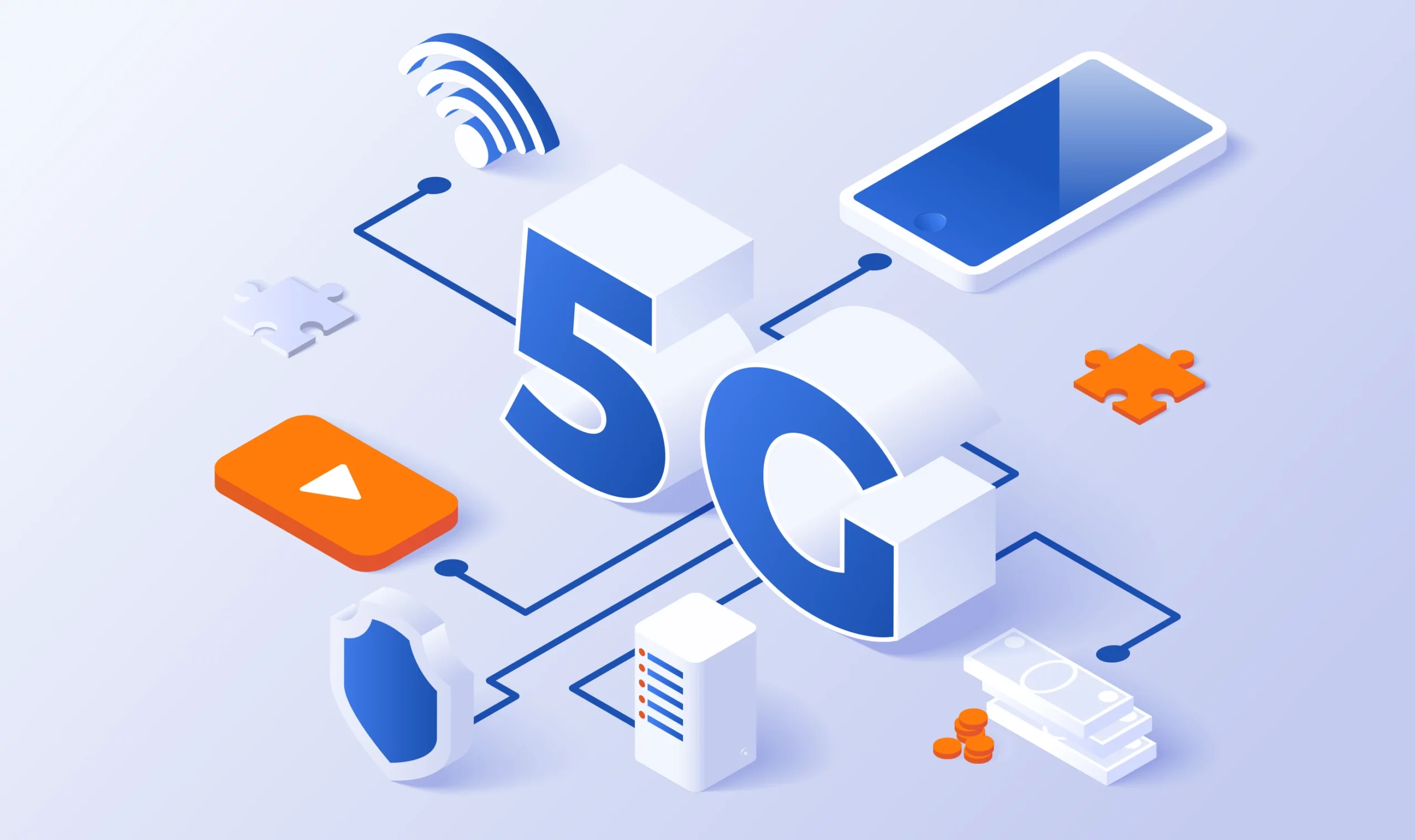In the dynamic landscape of telecommunications, the term “5G” has become a buzzword, promising to usher in a new era of connectivity. But what exactly is 5G, and why is it generating such excitement and anticipation? This article embarks on a comprehensive exploration of 5G technology, delving into its definition, key features, potential applications, and the transformative impact it holds for the future of communication.

Understanding 5G: Beyond the Buzz
At its core, 5G stands for the fifth generation of wireless technology, succeeding its predecessor, 4G LTE (Long-Term Evolution). Unlike previous generational shifts, 5G represents more than just an incremental improvement. It is a paradigm-shifting leap that aims to redefine how we connect and communicate in the digital age.
1. Faster Speeds: The Need for Speed in a Digital World
One of the primary defining features of 5G is its remarkable speed. While 4G LTE offers impressive download speeds, 5G takes it to a whole new level. The goal is to achieve multi-gigabit per second download speeds, potentially reaching up to 20 gigabits per second. This dramatic increase in speed not only enables faster downloads but also facilitates near-instantaneous response times, revolutionizing how we interact with digital content.
2. Low Latency: Reducing the Lag to Near-Zero
Latency, the time it takes for data to travel from the source to the destination and back, is a crucial factor in determining the responsiveness of a network. 5G aims to reduce latency to near-zero levels, with target latency ranging from 1 to 10 milliseconds. This ultra-low latency is a game-changer, particularly in applications that demand real-time interactions, such as online gaming, augmented reality (AR), and remote surgeries.
3. Massive Device Connectivity: The Internet of Things (IoT) Revolution
While 4G can handle a significant number of connected devices, 5G takes it a step further by enabling a massive number of simultaneous connections. This capability is especially critical as we enter the era of the Internet of Things (IoT), where everyday objects, from refrigerators to vehicles, are equipped with sensors and connectivity. With 5G, the vision of seamlessly interconnected devices contributing to a smarter and more efficient world becomes a reality.
4. Enhanced Capacity: Tackling Network Congestion
With the proliferation of smartphones, smart devices, and bandwidth-intensive applications, network congestion has been a persistent challenge. 5G addresses this issue by significantly increasing network capacity. The abundance of available bandwidth ensures that users experience consistently high speeds even in densely populated areas or during peak usage times.
5. Transformative Applications: Beyond Faster Downloads
Beyond faster downloads and smoother streaming experiences, 5G opens the door to transformative applications across various industries. In healthcare, it facilitates remote surgeries and real-time patient monitoring. In manufacturing, it enables the implementation of smart factories with connected machinery. The automotive industry benefits from advancements in autonomous driving and enhanced vehicle-to-everything (V2X) communication. The possibilities are diverse and profound, showcasing 5G’s potential to revolutionize how industries operate.
6. Edge Computing Integration: Redefining Data Processing
The integration of 5G with edge computing represents a powerful synergy. Edge computing involves processing data closer to the source rather than relying solely on distant data centers. This approach enhances efficiency, reduces latency, and is particularly advantageous in applications where instantaneous decision-making is crucial, such as autonomous vehicles and critical Internet of Things (IoT) applications.
7. Smart Cities: Building the Cities of Tomorrow
As urbanization continues to rise, the concept of smart cities gains prominence, and 5G plays a pivotal role in bringing this vision to life. Smart city initiatives leverage 5G’s capabilities to enhance public services, optimize traffic flow, improve energy efficiency, and enhance public safety. The integration of sensors, cameras, and connected devices creates a networked urban environment where data is harnessed for the collective benefit of citizens.
8. Rural Connectivity: Bridging the Digital Divide
While urban centers may be at the forefront of 5G adoption, the technology holds promise for addressing the digital divide in rural areas. 5G has the potential to provide high-speed internet access to underserved regions, unlocking opportunities for education, healthcare, and economic development. The deployment of 5G in rural areas becomes a catalyst for inclusivity, ensuring that the benefits of connectivity reach every corner of the globe.
Challenges and Considerations: Navigating the Path Forward
Despite its transformative potential, the widespread adoption of 5G is not without challenges. Infrastructure development, spectrum allocation, and concerns regarding security and privacy are hurdles that need to be navigated. The global rollout of 5G requires collaborative efforts between governments, telecommunications companies, and technology providers to ensure a smooth and secure transition.
Conclusion: A Quantum Leap into the Future of Connectivity
In conclusion, 5G technology represents a quantum leap in the evolution of wireless communication. Beyond faster speeds, it brings forth low latency, massive device connectivity, enhanced capacity, and the potential to revolutionize various industries. As 5G becomes more pervasive, we find ourselves on the brink of a digital revolution where connectivity is not just a utility but a transformative force that propels us into a future where the seamless exchange of information becomes an integral part of our daily lives.